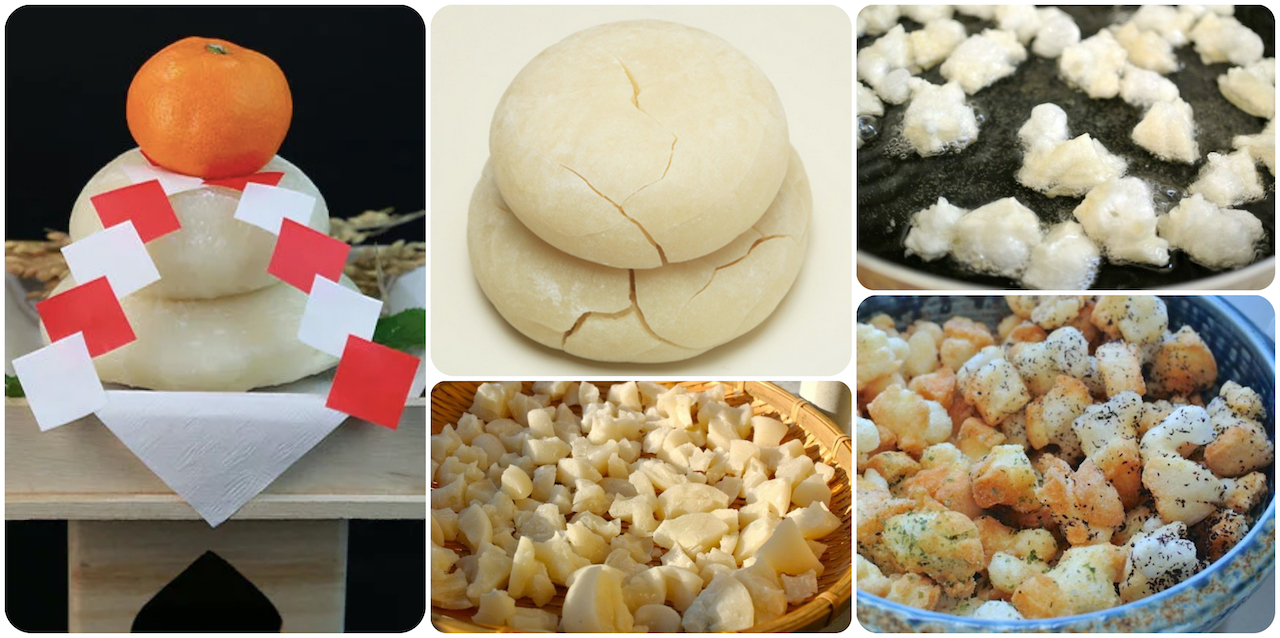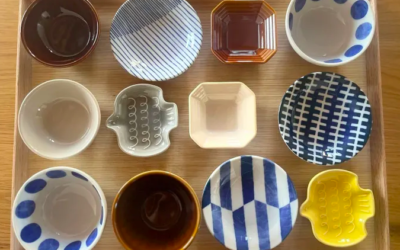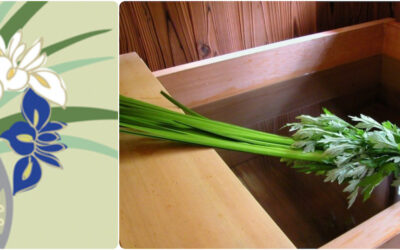
あられ・霰・ARARÉ
Crisp-and-Crunchy Rice Snacks
When listening to the weather report araré means “hailstones” but in the kitchen (or other culinary setting) it means “small cubes” or fine-diced omochi (sticky rice) that has been fried or baked.
No doubt the origin of this snack is linked to the Japanese no-waste philosophy of mottanai, that compels frugal folks to make good use of leftovers. Kagami Mochi (ceremonial sticky rice cakes; above, left) are on display at New Year’s time in family and community settings. After a week or so has passed, the once soft-and-gooey omochi typically dries out. On January 11th the now cracked-and-crusty omochi is shattered into small bits and pieces with a wooden mallet in a ceremony known as Kagami-Biraki (literally “Opening the Mirror”).
The word biraki, based on the verb hiraku (to open), is a more auspicious way to describe the smashing of stiffened rice cakes than the violent verbs waru (to split), tataku (to pound, smash or thwack) and kiru (to cut up, to kill).
The shards of smashed rice are repurposed is a variety of ways. My favorite is araré the addictively delicious, crisp-and-crunchy rice snack. Download a recipe to make your own ARARÉ
For further informatiion and inspiration check out the PROJECT Rice Snacks post.




